The Washington Quarter is a classic piece for any numismatist. Not every year produces a rarity as valuable as the 1980 quarter.
The 1980 Washington quarter has a good amount in circulation and can be acquired easily at an affordable price. But if you love a worthy historical background that comes with it, this coin is for you—yes, we’re talking about the 1980-P quarter!
So, if you want to know more about the varieties and how much a 1980 quarter is worth today, keep reading.
| 1980 Washington Quarter Value Chart | |||
| Coin Grade | 1980-P Quarter | 1980-D Quarter | 1980-S Quarter |
| Good (G4) | $0.30 | $0.30 | / |
| Fine (F12) | $0.30 | $0.30 | / |
| Extremely Fine (XF40) | $0.30 | $0.30 | / |
| About Uncirculated (AU50) | $0.40 | $0.40 | / |
| Uncirculated (MS60) | $1.50-$2 | $1.50-$2 | $1.15 |
The Remarkable 1980 Quarter History

There have been a lot of changes since the first release of the Washington Quarter in 1932. Among them is the transition of 1964-dated silver quarters to 1965-dated clad quarters and the no-mintmark policy for the new clad quarters. It continued until 1967, regardless of the Mint origin, to prevent another national coin shortage.
Then—in 1968, the mint marks returned, except the Philadelphia Mint resumed to produce without them. Twelve years passed, and the engravers modified the coin several times. But it was only in 1980 that the quarter production made a remarkable turning point for the Washington Quarter Series.
The 1980 Quarter is the first in the clad quarter coinage to bore the “P” mark from the Philadelphia Mint. It may seem like a small gesture, but as a mother Mint, this coin holds historical importance.
And together with Denver and San Francisco Mint, they produced more than 1 billion pieces of the 1980 quarter. Two of which are regular strikes, while one is a proof version.
| Mint Location | Coin Variety | Mintage |
| Philadelphia | 1980-P Quarter | 635,832,000 |
| Denver | 1980-D Quarter | 518,327,487 |
| San Francisco | 1980-S Proof Quarter | 3,554,806 |
| Total | 1,157,714,293 |
1980 Quarter Coin Information
- Category: Washington Quarter (1965-1998)
- Face Value: 25 Cents
- Obverse-Reverse Designer: John Flanagan
- Metal Composition: 75% Copper, 25% Nickel
- Weight: 5.67 grams
- Diameter: 24.30 millimeters
- Edge: Reeded
Visible Changes In The 1980 Washington Quarter
Since the coin’s inception, there have been several changes in the design and the overall coin build. Initially, the quarter sported a high rim on the reverse side. But for an unknown reason, the new hub features a lower rim that makes the details wear out easily for circulated coins.
Another fine-tuning occurred on the word STATES, fixing the spaces. In the 1932 version, the letters E and S are almost touching. But for the 1980 quarter, you’ll notice a more visible separation between.

Aside from these modifications, they also relocated the mint mark. The original design showcases it below the wreath on the reverse side. However, they transferred it to the right lower field on the obverse side for the 1980-date quarters.
1980 Washington Quarter Varieties and Valuation
Philadelphia, Denver, and San Francisco Mints produced 1980 quarters, creating three varieties. So, in this section, we will tackle each coin’s population estimate, value, and auction record.
1980-P Quarter Value

The Philadelphia Mint released over 635 million 1980 P-marked quarters, making it very common. However, MS65 and MS66 conditions are rare, with roughly a hundred examples recorded. With MS67, it only has 60 known specimens, four of which have a plus grade, making it extremely rare. MS68, on the other hand, only has a sole sample. But although graded as the highest condition for this variety, none showed in any auction.
Now—with a declining survival estimate for the mint state, does that mean the 1980-P escalated in value? Let’s look into the chart below of its current estimated worth.
| Grade | 1980-P Estimated Value |
| MS60 | $1.50-$2 |
| MS61 | $2.50-$3 |
| MS62 | $3.50-$4 |
| MS63 | $5-$6 |
| MS64 | $7.50-$8.50 |
| MS65 | $10 |
| MS66 | $15 |
| MS67 | $100 |
A 1980-P quarter is worth only a few cents over its face value due to its metal composition. As of writing, it is valued at $0.30 to $0.85, and a higher grade can fetch up to $100. These estimated values remained unchanged for years, showing neither signs of increase or decrease.
But the situation differs in a room full of earnest collectors, especially if the coin shows exemplary characteristics. An example is the 1980-P MS67+ sold for $900 in 2019, the highest auction record for this variety. Another also sold for $382 for the 1980 quarter with an MS67 grade in 2013 by Heritage Auctions.
1980-D Quarter Value
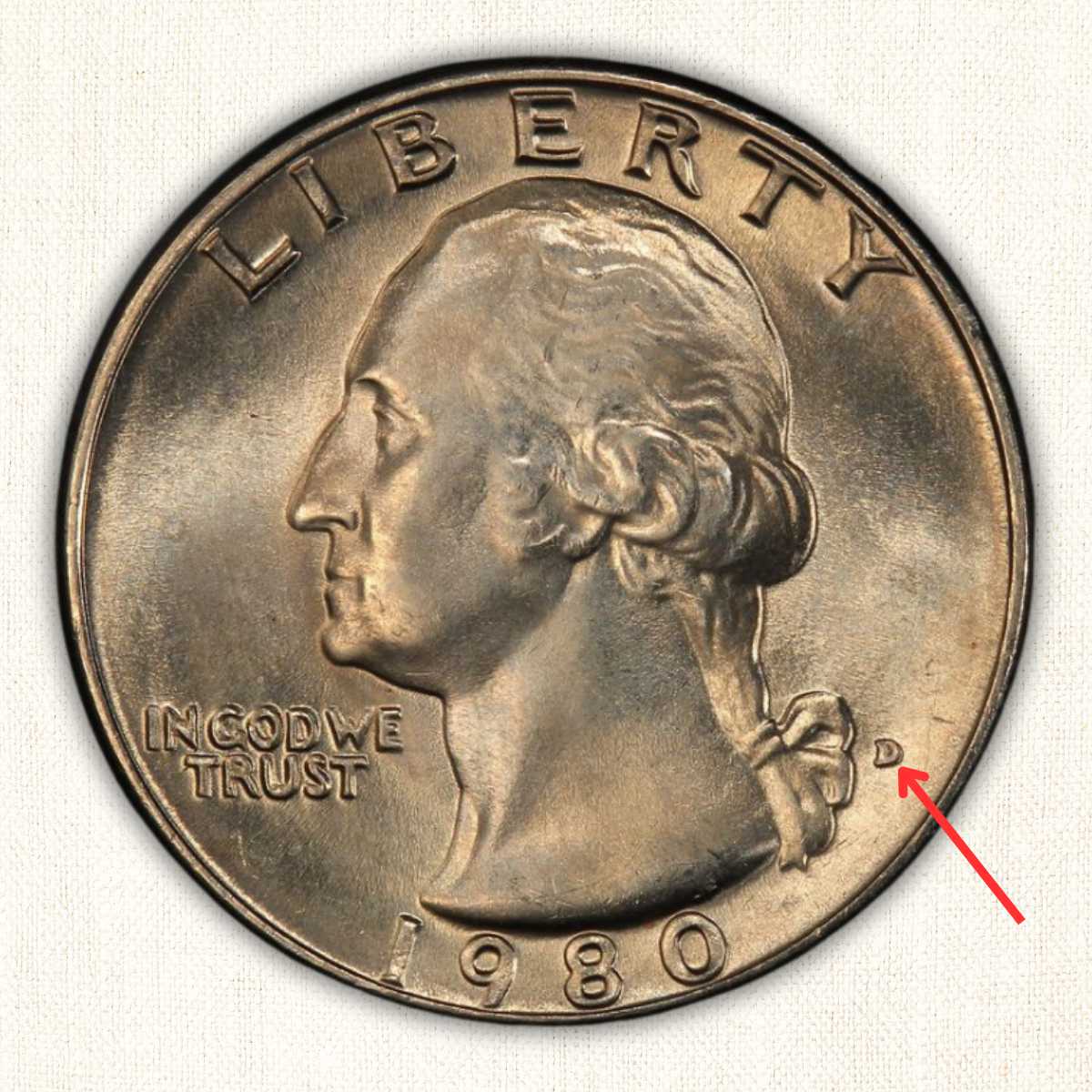
Denver followed suit with over 518 million 1980-D quarters released in circulation. With such high production, circulated grades are still very common and are easy to obtain. But as expected, those in MS65 and above are considered rare, with more or less a hundred examined and graded. In addition, MS67 is the highest grade recorded for this variety, with only one known specimen with a plus designation.
Now, moving on, let’s see how much a mint state 1980-D Washington Quarter is worth today.
| Grade | 1980-D Estimated Value |
| MS60 | $1.50-$2 |
| MS61 | $2.50-$3 |
| MS62 | $3.50-$4 |
| MS63 | $5-$6 |
| MS64 | $7.50-$8.50 |
| MS65 | $15 |
| MS66 | $30 |
| MS67 | $155 |
Like the Philadelphia Mint, the 1980-D circulated condition quarter is valued at $0.30 to $0.85. Their estimated value only differs for MS65 and above condition selling for a few dollars higher. Today, an uncirculated condition can fetch as high as $155. But let’s also look at the auction records to see how far it can sell.
Based on PCGS, the highest sale price for a 1980-D MS67 quarter is $1,380 during an open online bid session. It is one of the finest known coins for this grade among the other 25 other examples. But another of its kin closely followed, closing a bid price of $646.25 in 2015 by Heritage Auctions.
Indeed, there is no question that the MS67 grade would dominate the chart. However, there are also a few MS61 that brought premium offers to the table because of the dramatic error present on the coin. But we’ll talk more about it later in another section.
1980-S Proof Quarter Value

Philadelphia first minted the silver Washington-proof quarters from 1936 to 1964. But as the coin composition transitioned into clad alloy, San Francisco took full responsibility for minting the coin. The Mint produces 3,554,806 pieces of 1980-S Proof quarters, a hefty amount to satisfy coin collectors.
Most of it is also well taken care of as the survival estimate is still around 3 million, making all grades very common. And if you’re thinking that the population would depreciate its price, you’re not mistaken.
In the chart, you’ll see the current value of a 1980-S Proof Ultra Cameo.
| Grade | PF DCAM Estimated Value |
| PF60 | $1.15 |
| PF62 | $2.40 |
| PF64 | $4.80 |
| PF66 | $11.50 |
| PF68 | $16.25 |
| PF70 | $85 |
Since this variety is readily available in the market, you can get it for an affordable price of $1.15 to $85. The starting value has been consistent for five years, but PF70 had a rough historical price.
In the early years, a 1980-S Proof fetched between $163 to $200. But in 2009, it continued to show a downslope, reaching $82.50 as its lowest value in history. Fruitfully, it increased a few dollars in the last quarter of 2014 and settled at $85 until today.
So now that we’ve learned how its values dance in the market for decades, let’s look at how it goes with the auctions.
According to PCGS, a 1980-S PF70 DCAM holds the highest sale price for this variety. It sold for $253 in 2004 during the September Long Beach Bullet Sale. Now, consider the years that have passed and the significant changes in market value.
The most recent sale happened in May 2020, involving (again) a PF 70 DCAM. But this time, it only had a bid price of $17, sold by David Lawrence RC during Internet Auction.
List of 1980 Error Coins From Auctions and The Online Market
The 1980 Washington Quarter had many error coins, from sizeable to minimal damages encountered during minting. So, today, we’ll list some of it from auctions and the ones currently available in the market.
1. 1980-P Quarter Struck On Five-Cent Planchet: Auctioned
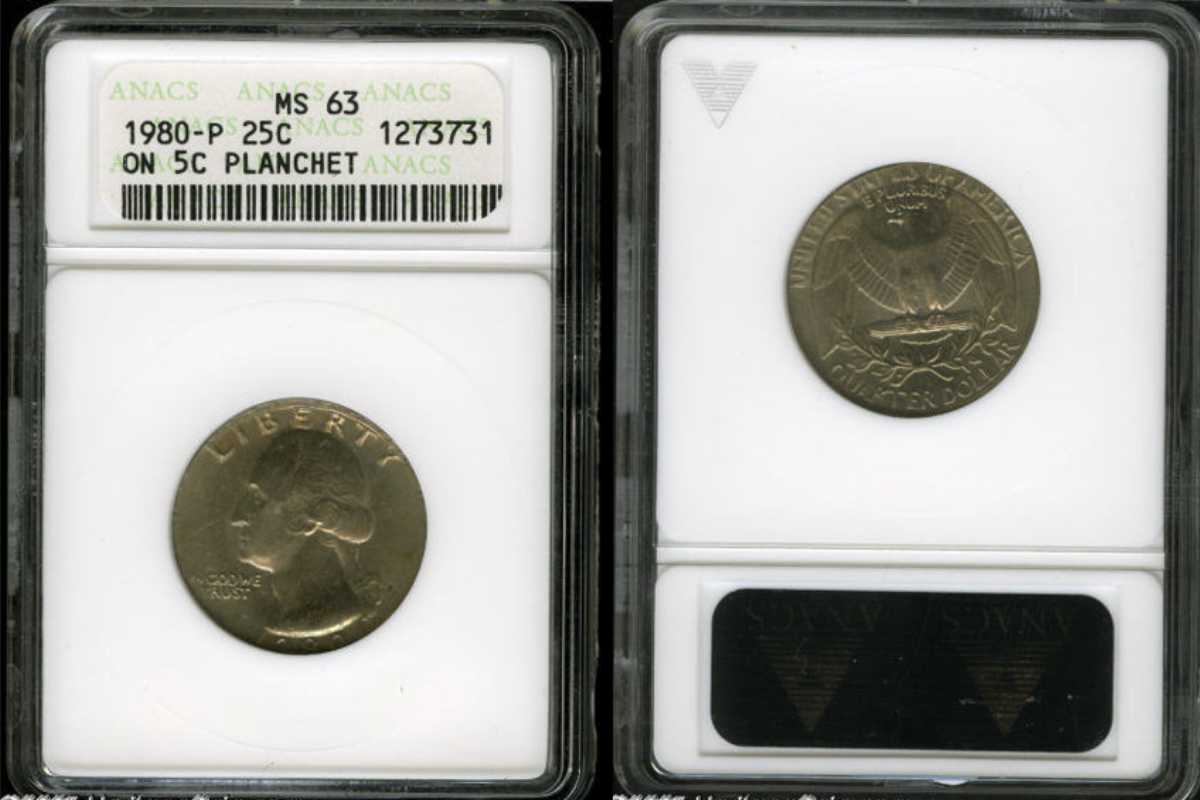
There are two coins with this error sold by Heritage Auctions. The first is an MS63, sold for $253. The second is an MS64, sold for $184.
The inscription from this coin is visibly complete but somehow distorted since the planchet is too undersized for the quarter die. Additionally, it is dusky pearl-gray and olive-gold in color.
2. 1980-D Quarter On Five-Cent Planchet: Auctioned
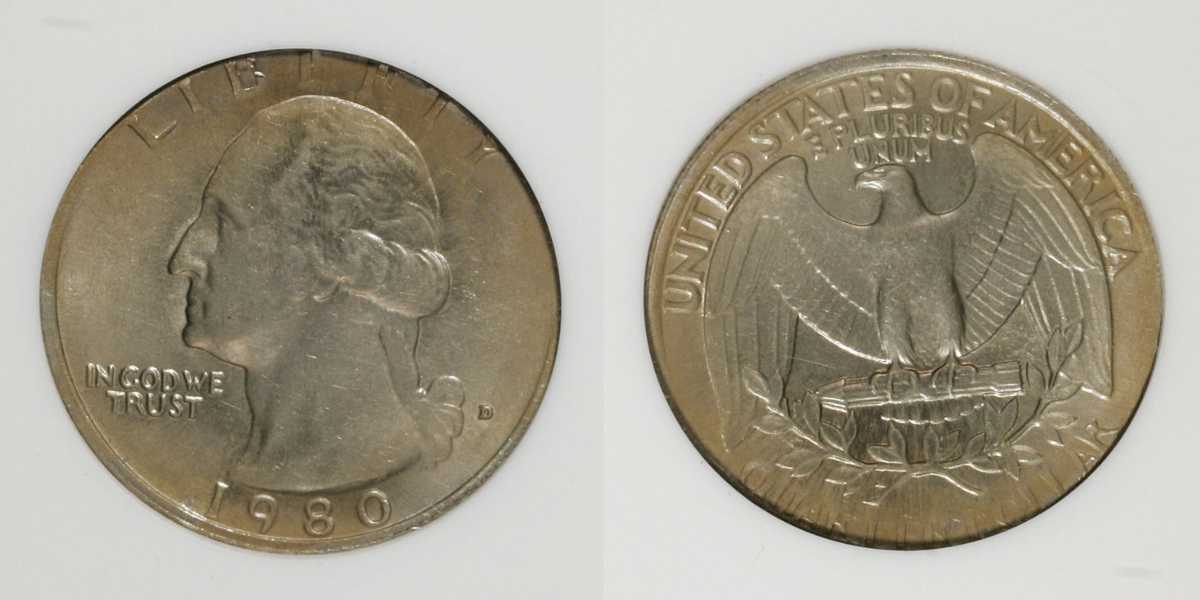
The Philadelphia Mint is not the only one to have produced this error; a coin from the Denver Mint with an MS61 grade also sold for $184. In this coin, the word LIBERTY on the obverse side is pressed on the rim, while the QUARTER DOLLAR is almost trimmed.
3. 1980-P Quarter Flipover Double Strike: Auctioned
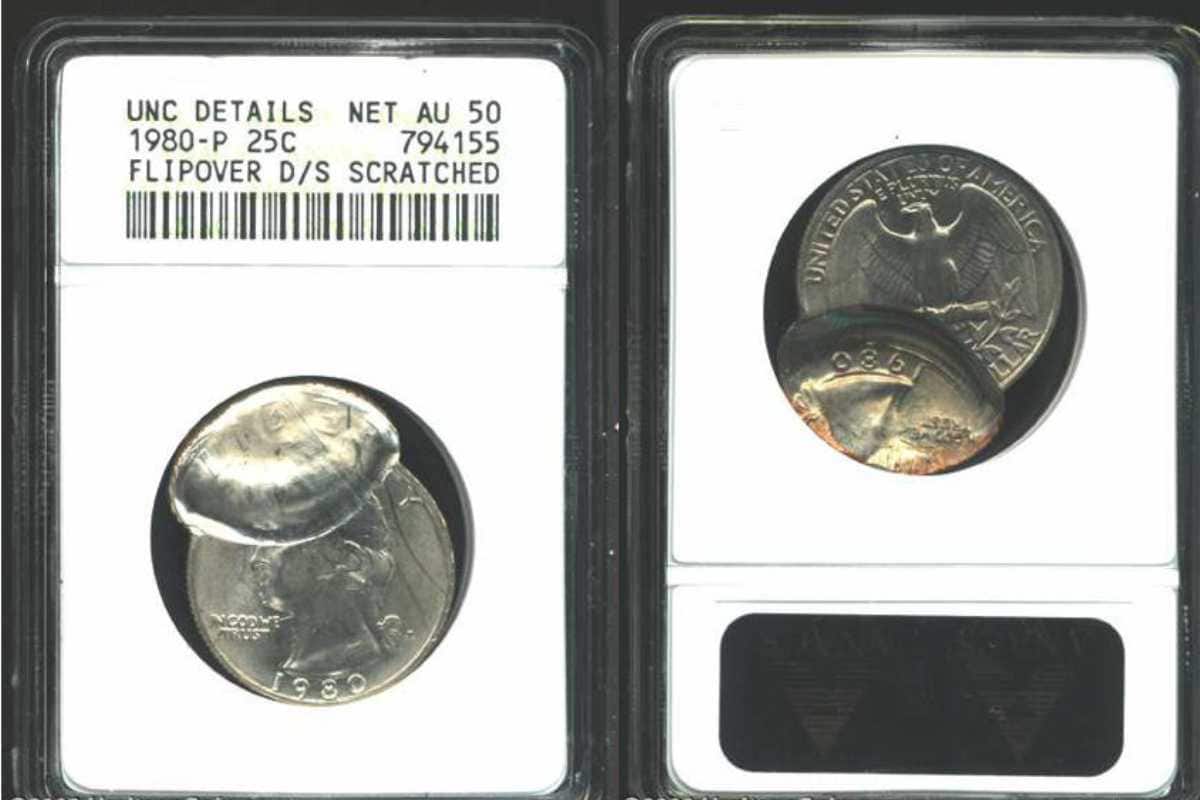
Here is an AU50 1980 Quarter that has a dramatic double strike. The reverse side has some details from the obverse side, showing the 1980 year on both sides. This coin was sold for $132 by Heritage Auctions, although it could have reached a higher price if there were no evident scratches.
4. 1980-D Washington Quarter Filled Mint Mark: Selling For $20
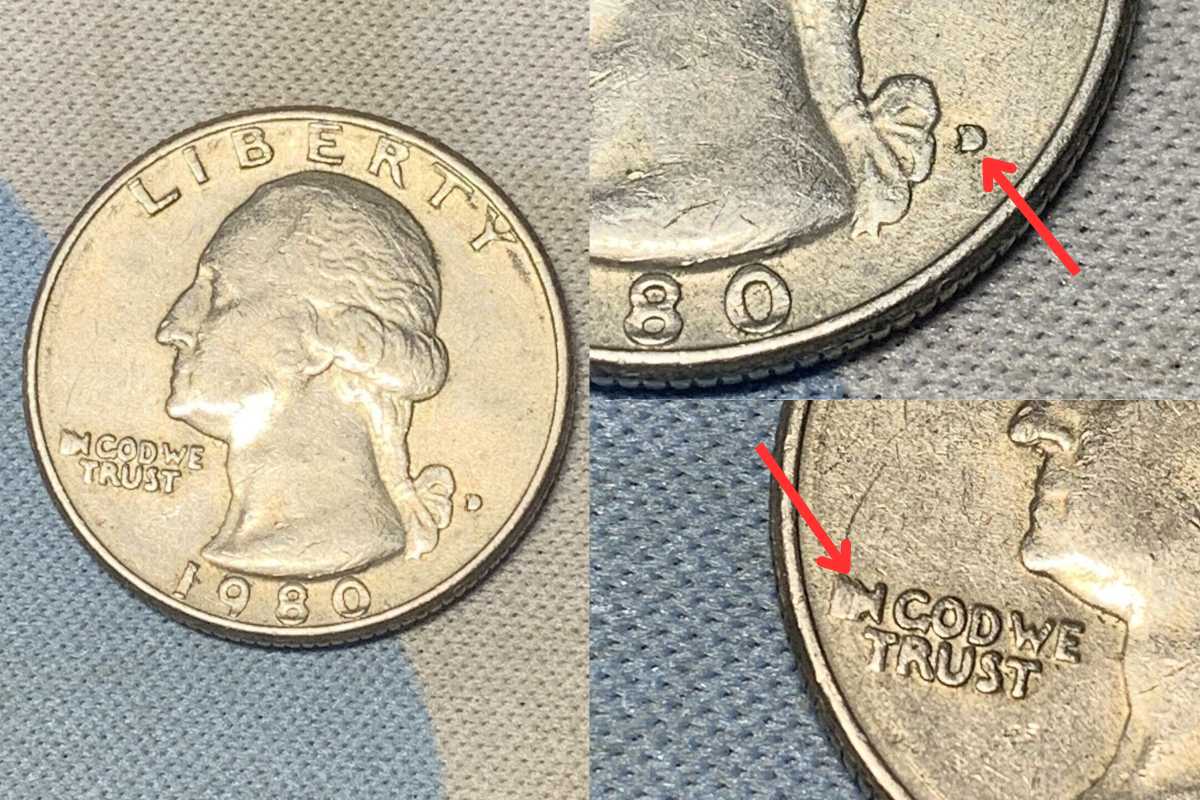
With all the quarters in 1980 bearing a mintmark, it is impossible not to encounter one that is filled. This error happens when a softer object, like grease, fills the crevices of the die and causes a smudged appearance on the coin. An example is this D-filled coin, but you can also notice the I and N in IN GOD WE TRUST are touching as a sign of a weak strike.
Since it’s a known error for a 1980-D quarter, you can expect it to sell around $6 to $20, depending on the condition.
5. 1980-P Quarter Die Struck Both Sides: Selling For 28.75
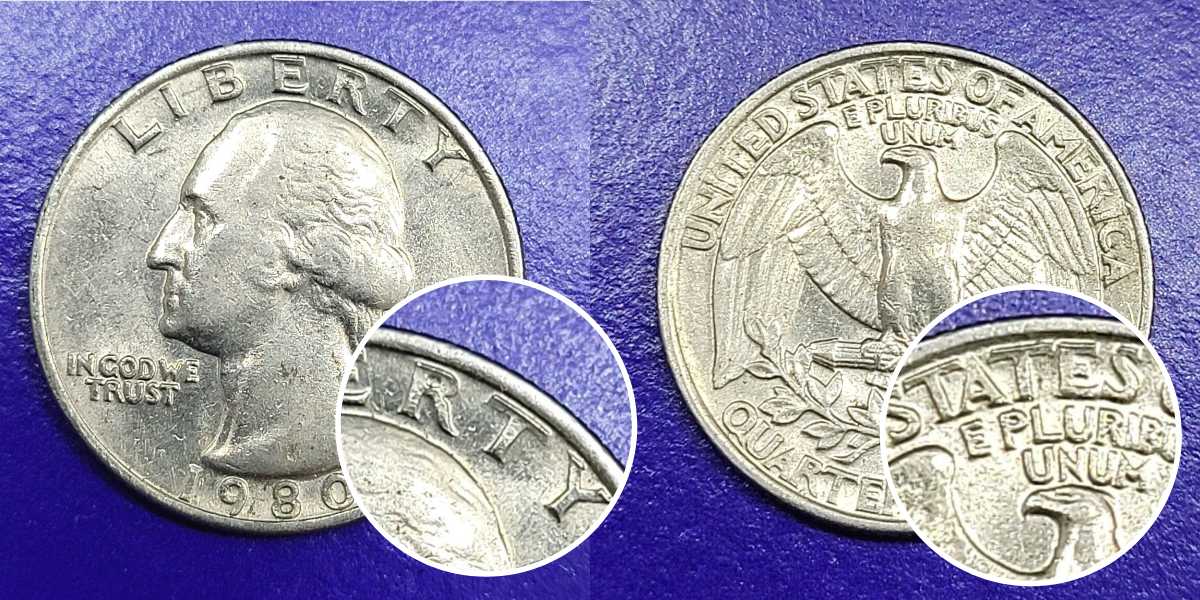
Another familiar error on coins is the double die obverse or reverse. It can happen on one or both sides of the coin, like in the photo. Here, you’ll notice the letters R and T in LIBERTY of the obverse side with significantly evident doubling. On the reverse side, it is noticeable in the word STATES.
For this specific 1980 Quarter, the asking price is about $28.75.
6. 1980-P Quarter Uncentered Broadstrike Error: Selling For $43.95

Many mistaken off-center strikes with broadstrike errors. But to clarify things, the latter presents the whole design while the former has missing legends. An uncentered broadstrike happens when the coin gets struck out of the collar, expanding the diameter of the original design. If you find quarters with this kind of error, expect it to sell around $5 to $50.
7. 1980-P MS62 Quarter Obverse Missing Clad Layer: Selling For $395
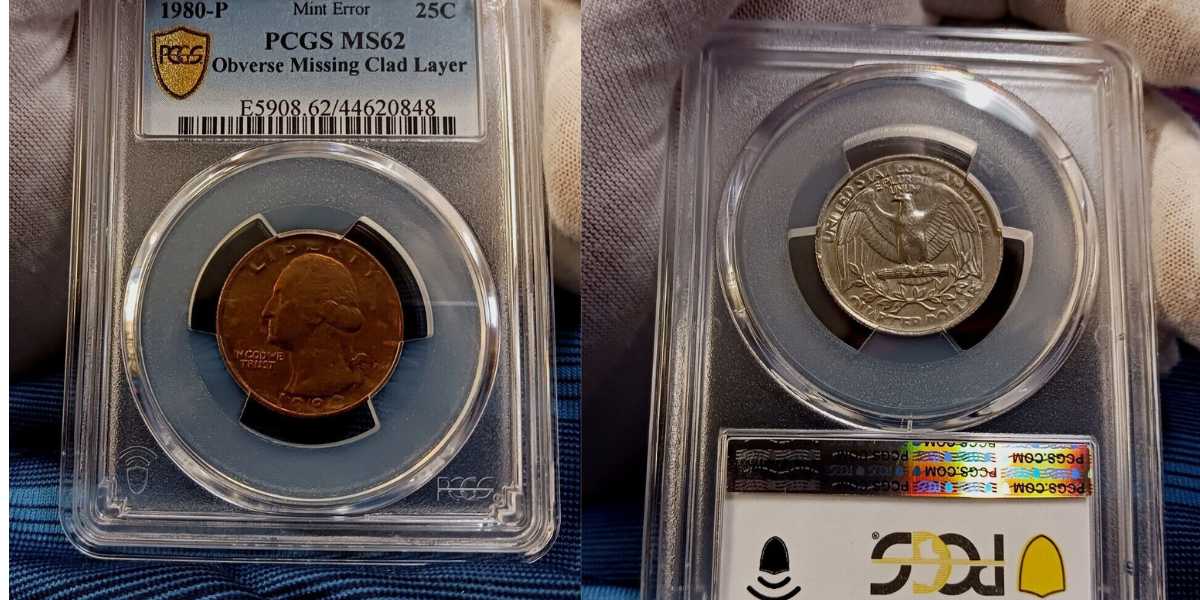
Among the listed errors, a 1980 quarter missing a clad layer is not what you’ll encounter quite often. Here, you’ll find one side of the coin silvery-white in color, while the opposite side is reddish brown.
It happens when the nickel layer does not bond securely to the copper core. And since it’s missing a piece, coins with this error usually weigh less than 15% of the original quarter. This error type usually sells for around $75 to $100, but higher mint state conditions can fetch more.
8. 1980-P Quarter Curved and Rim Clip Error: Selling For $34.95
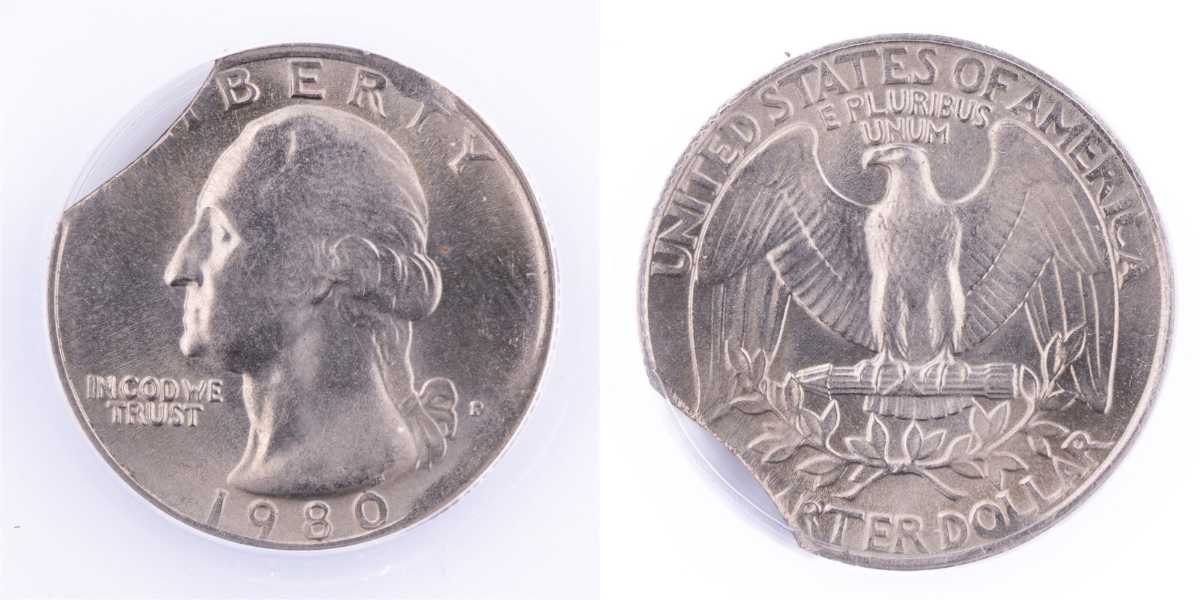
A typical clip error usually shows a curve on the coin rim. It happens when a planchet gets fed inside a punching press set to a lower speed when compared to the previous ones.
Additionally, you’ll notice a weak side on the opposite of the clip, known as the Blakesley effect. It is more evident on the obverse side, where the P-mark almost blended with the pinched area. This specific coin sells for $34.95, but quarters with unique clips get higher value.
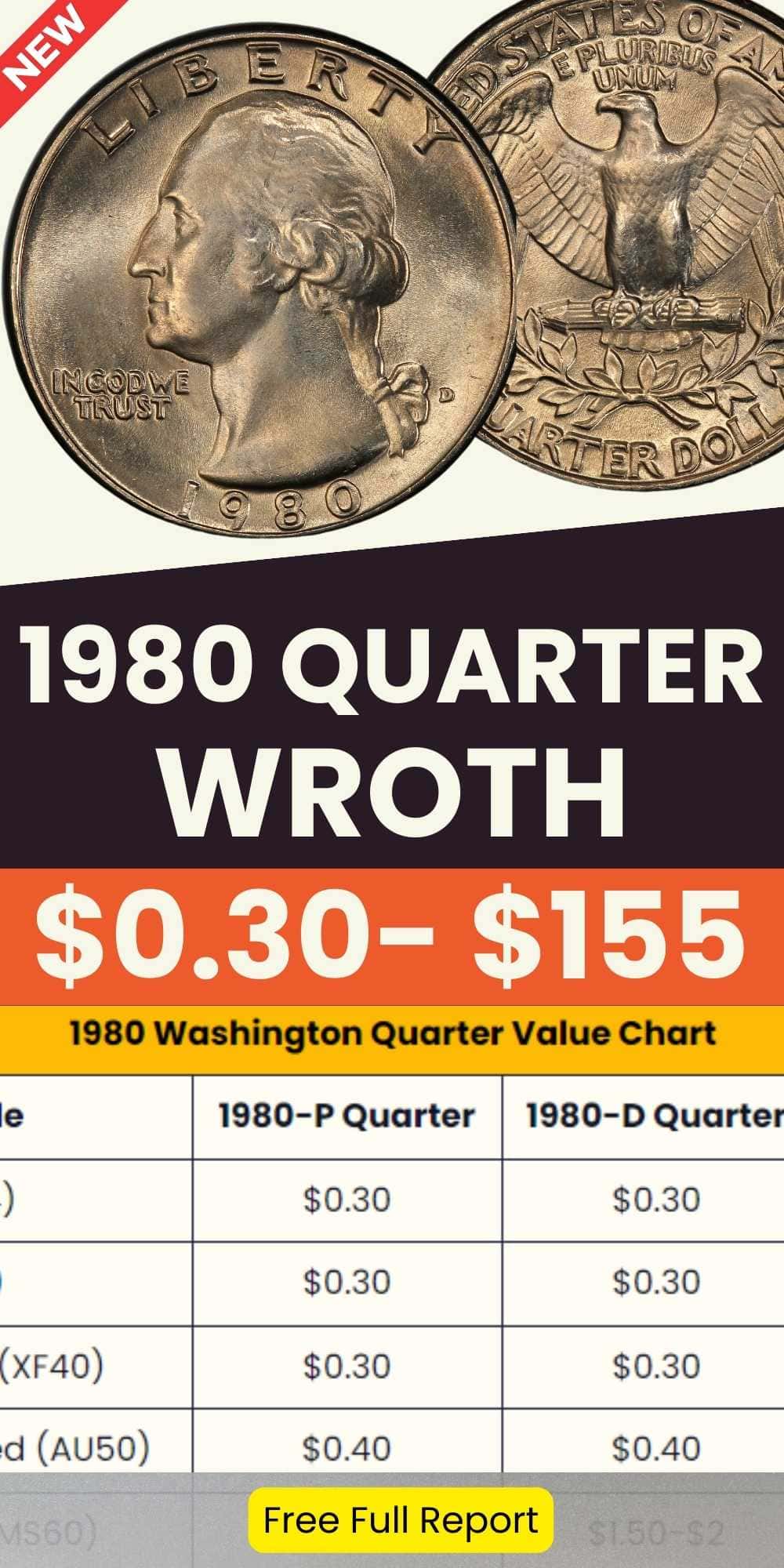
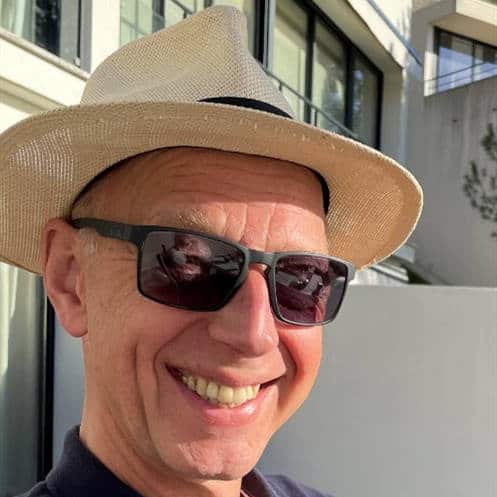
Jenson is a professional numismatist, a dedicated coin collector, a graduate of the College of Business at Oregon State, a life member of the American Numismatic Association (ANA), and an overall coin nerd. He is the founder of Coin Value List.
